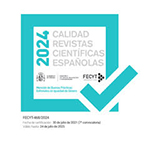Relics, Images, and Christian Apotropaic Devices in the Roman-Persian Wars (4th-7th Centuries)
Abstract
This paper analyses the military use of holy relics, images, and other Christian apotropaic devices in the Roman-Persian wars. I examine a wide range of literary evidence from the 4th to the 7th century exploring where, why, and how different Christian objects were used in military contexts. Moreover, I consider different factors, as the local religious practices or the rivalry between the Christian Roman Empire and Zoroastrian Persia. I argue that the earliest military uses of relics and holy images happened in the context of the Roman-Persian conflict and frontier region, and that, during the 4th-7th centuries, these uses were much more common there than anywhere else. Also, that some local practices of this region could have been adopted by military officers and the Imperial elite. I propose that three factors could explain this: First, the intensity of the cult of relics and images in Syria and the Near East. Second, the growing identification of the Roman Empire as a Christian power between the 4th and 7th centuries. Finally, the Roman-Persian conflict and the climate of religious confrontation that grew over the course of the Byzantine-Sassanian wars.
Downloads
Article download
License
In order to support the global exchange of knowledge, the journal Eikon Imago is allowing unrestricted access to its content as from its publication in this electronic edition, and as such it is an open-access journal. The originals published in this journal are the property of the Complutense University of Madrid and any reproduction thereof in full or in part must cite the source. All content is distributed under a Creative Commons Attribution 4.0 use and distribution licence (CC BY 4.0). This circumstance must be expressly stated in these terms where necessary. You can view the summary and the complete legal text of the licence.











